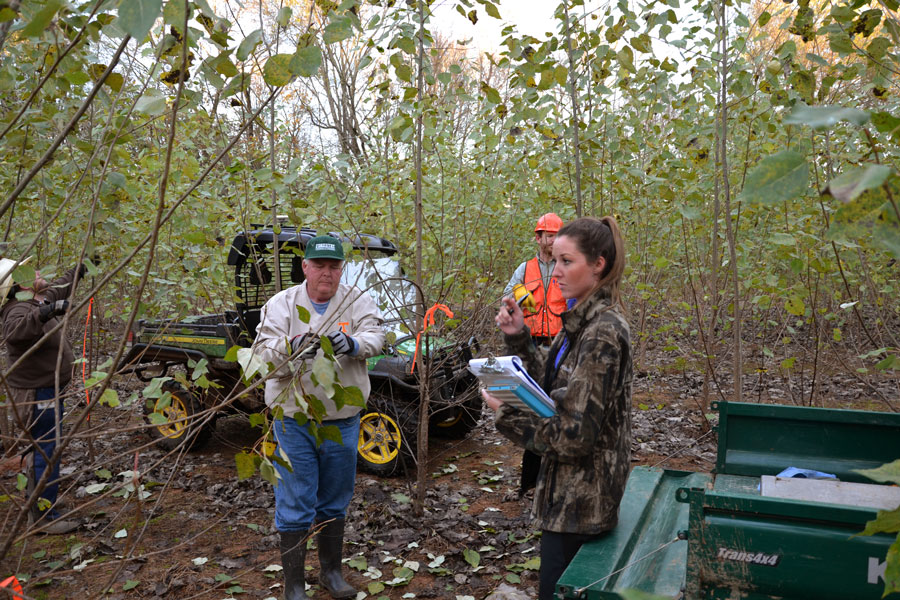Richard Shuren, Manager, Tree Improvement Operations
Jesus Espinoza, Director of Silvicultural Research
Marina Heppenstall, WSU

Measurements are critical to predicting the yield and market potential of a poplar bioenergy farm. The AHB feedstock team measures poplars annually at the demonstration sites to track intermediate growth. This data will be used to help future growers estimate their biomass yields in order to make contracts with buyers.
Frequent questions concerning the growing of hybrid poplar bioenergy crops include:
- How can I track the performance of my crop through each growing cycle?
- I’m harvesting in two months. How can I estimate the yield of my trees?
These yield questions are addressed every year at the AHB poplar demonstration sites by conducting an inventory of the standing biomass. This includes going to the field, measuring trees, and, through the use of yield tables, converting the measurements to an estimate of biomass yield, defined as bone dry tons (BDT’s) per acre and including wood, branches, and bark.

This November, Rich Shuren of Greenwood Resources took a trip to a short-rotation poplar demonstration site in Columbus, Mississippi to teach members from the IBSS project (a sister USDA NIFA grant to AHB) how to take an inventory of the biomass yield.
The process begins prior to going out to the field by systematically placing plots based on the acreage and dimensions of the planting block. This avoids any bias in plot establishment that might tend to favor fully-stocked or well-growing spots in a field over less vigorous portions. A rule of thumb for large hybrid poplar plantings is to establish one plot for every two acres planted. As an example, a rectangular 18-acre field would have nine inventory plots typically 36 ft by 10 feet. The size of the sample plots and number of trees represented within each plot can then be extrapolated to the number of trees per acre for later calculating the expected yield per acre.

The trees in the sample plot are then measured for diameter at breast height and total height. If the stand has been previously harvested, the trees may have more than one sprout that contributes to biomass yield and each stem over 4.5 feet tall must be measured. Dead or missing trees are also recorded and considered in the final yield calculation. These measurements can then be used with the assistance of a yield table to calculate an estimated biomass yield in tons per acre.
Yield tables are a way of relating tree measurements to biomass yields from an individual acre of plantings. The data GreenWood Resources collects from the annual inventories at each of the demonstration sites will be used to build a yield table for short-rotation hybrid poplar grown on coppice cycles. The yield tables GreenWood creates will then be available for growers to help them evaluate yield potentials in their own poplars.
A full description of how to take an inventory for biomass yield will be available in the manual “A Growers Guide to Short-Rotation Hybrid Poplar as a Bioenergy Crop in the Pacific Northwest” that will be released next year.
